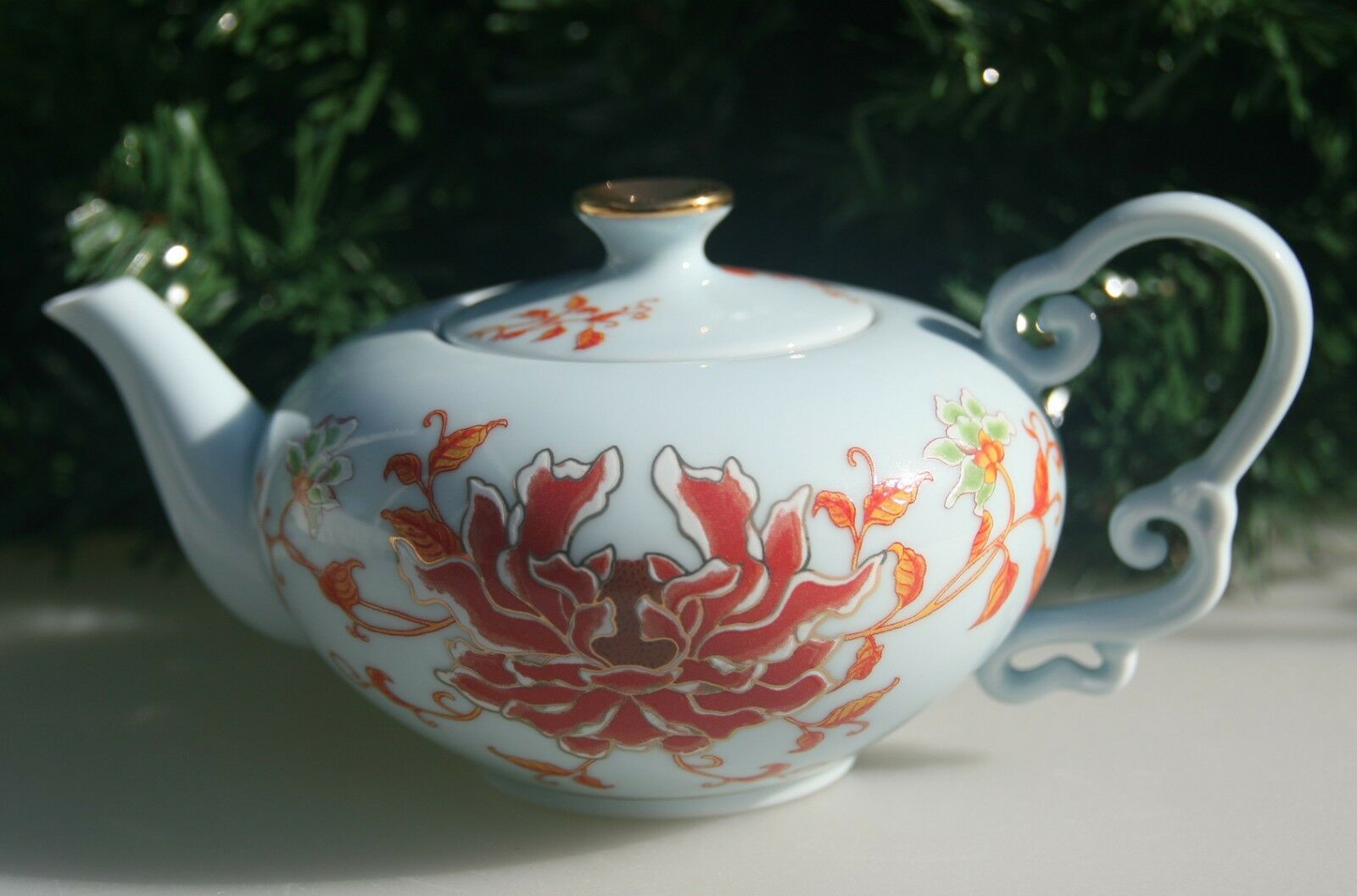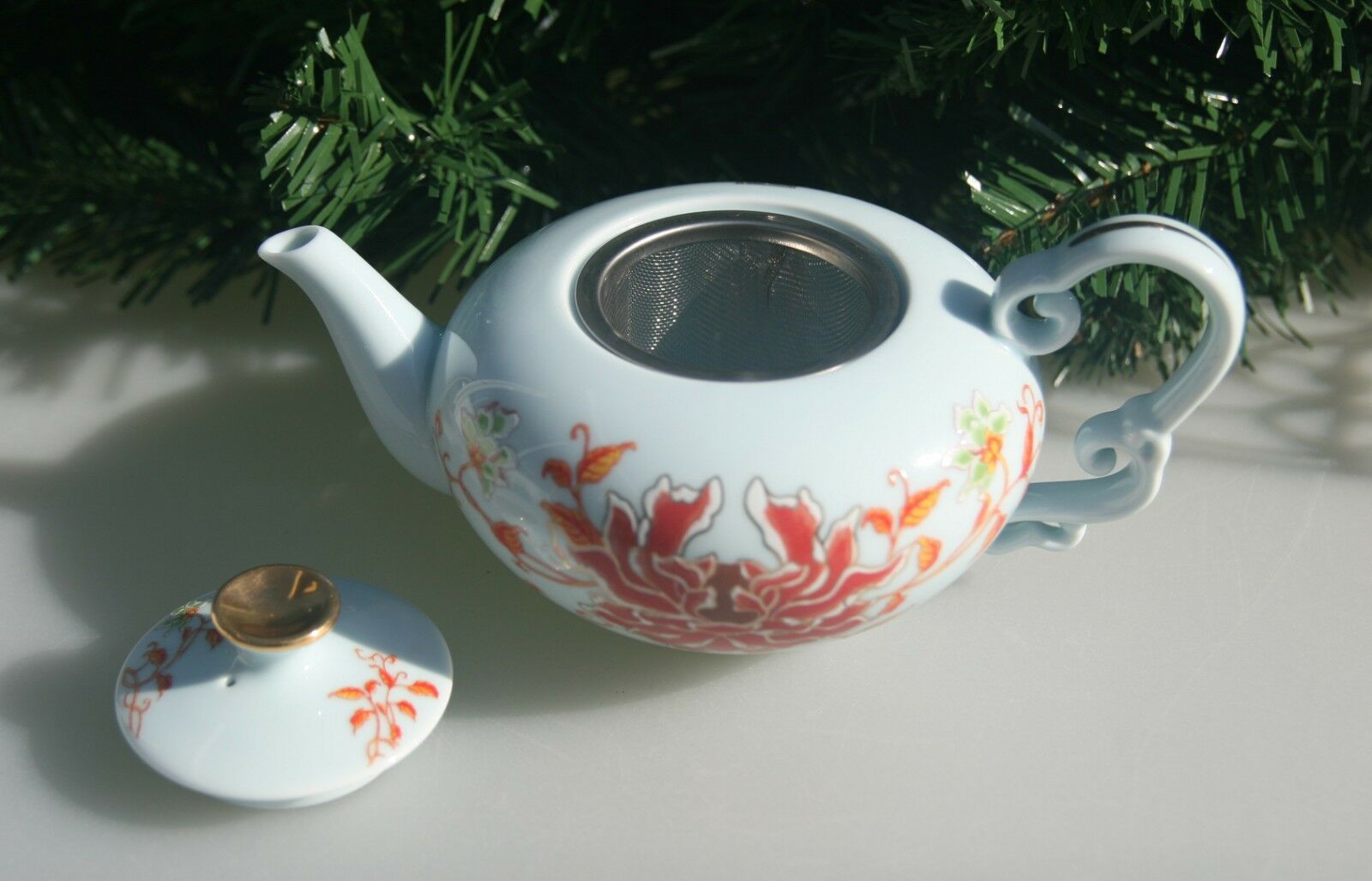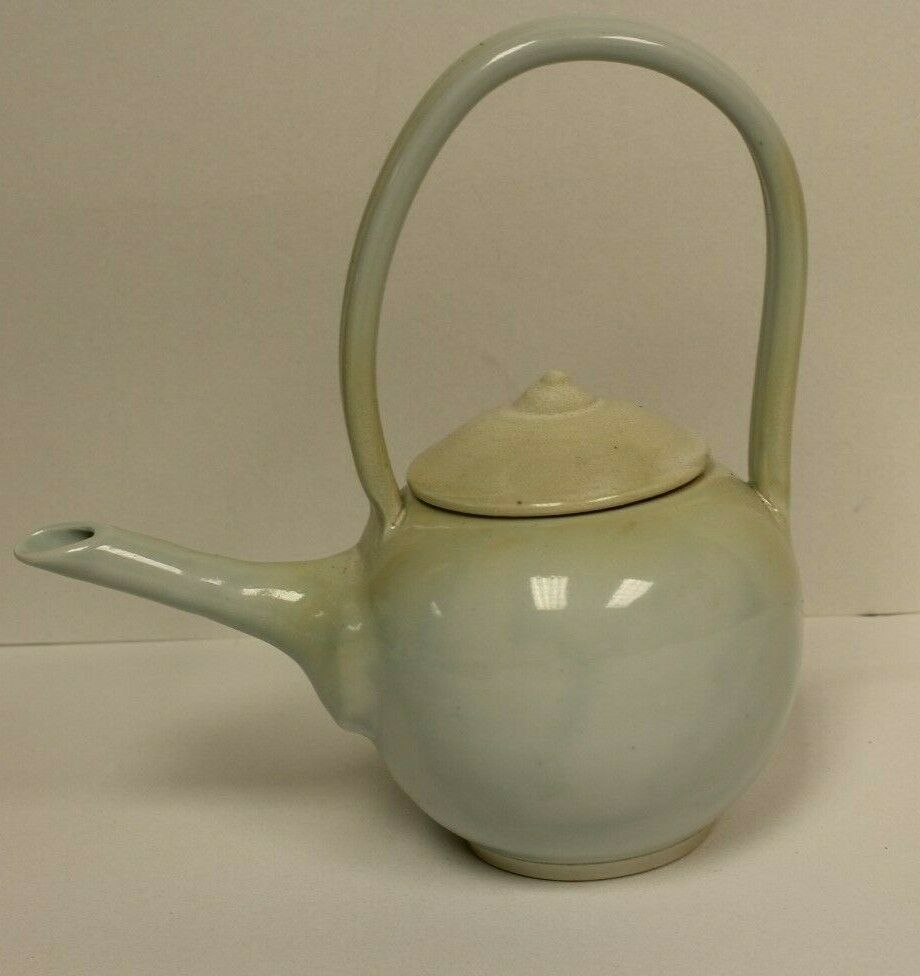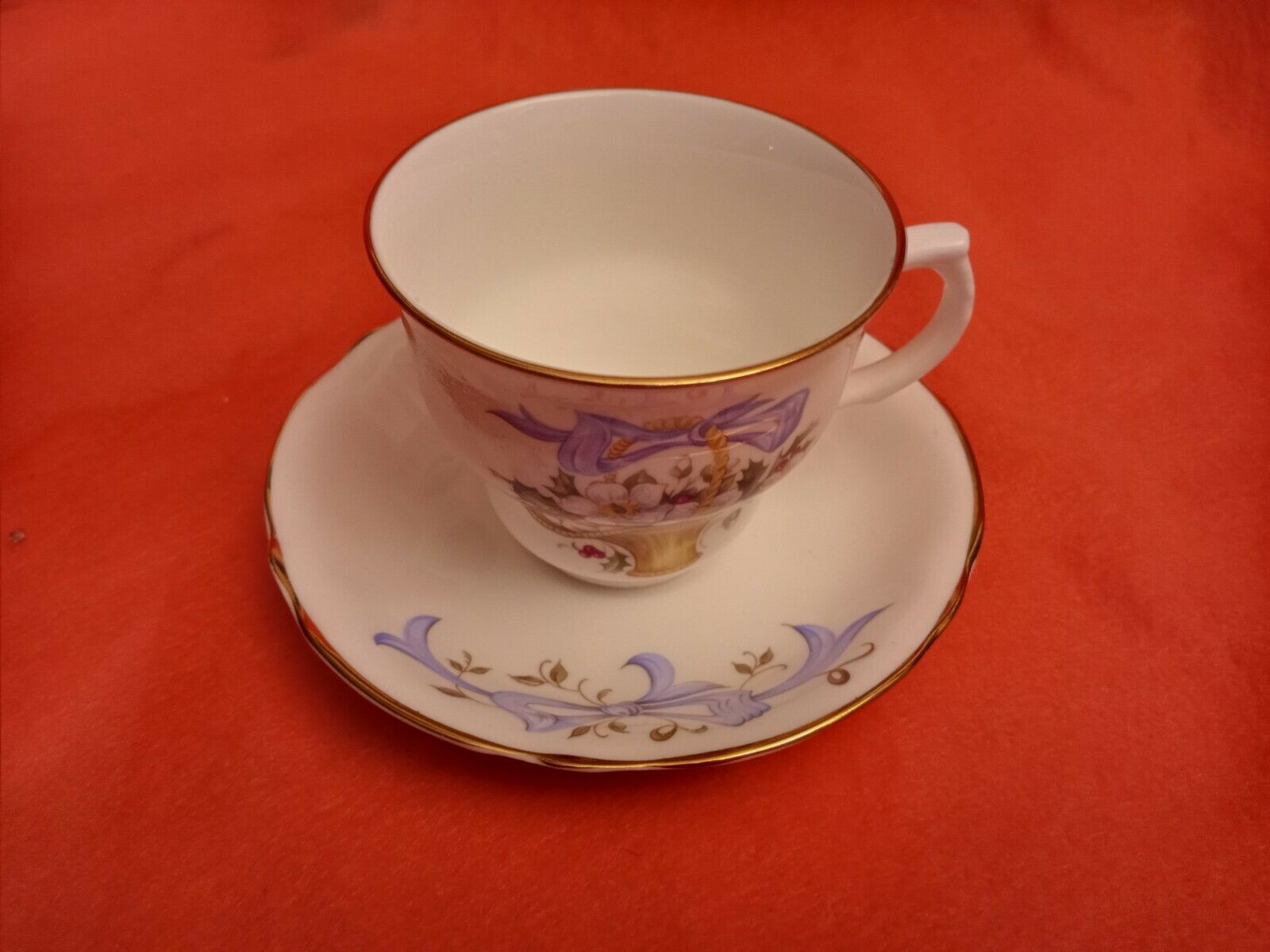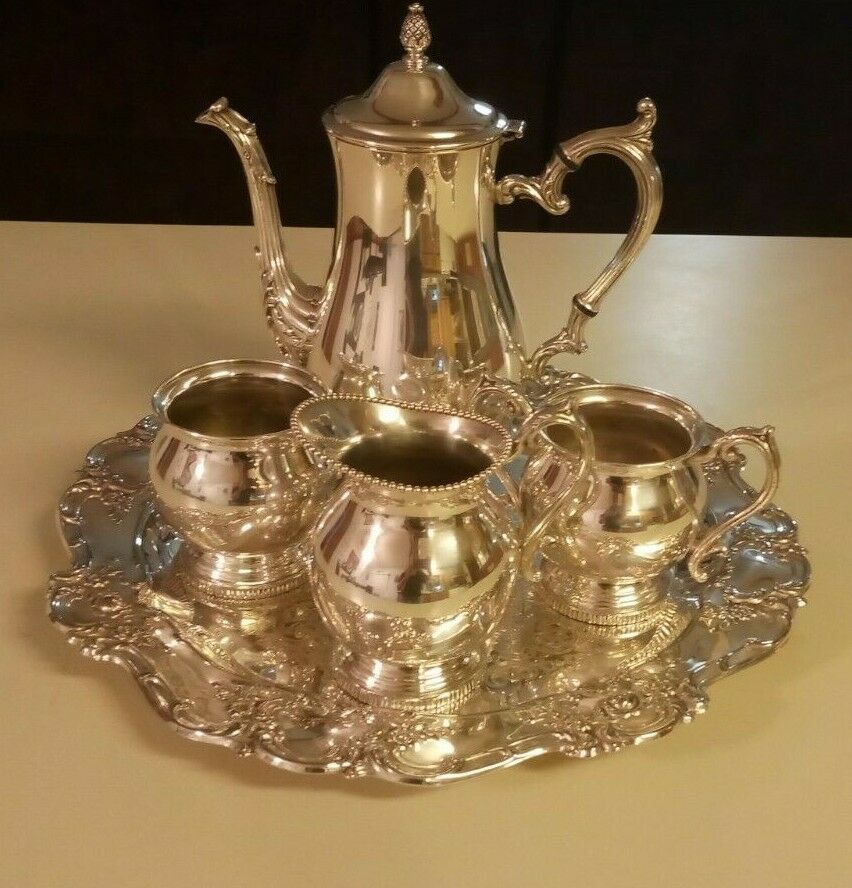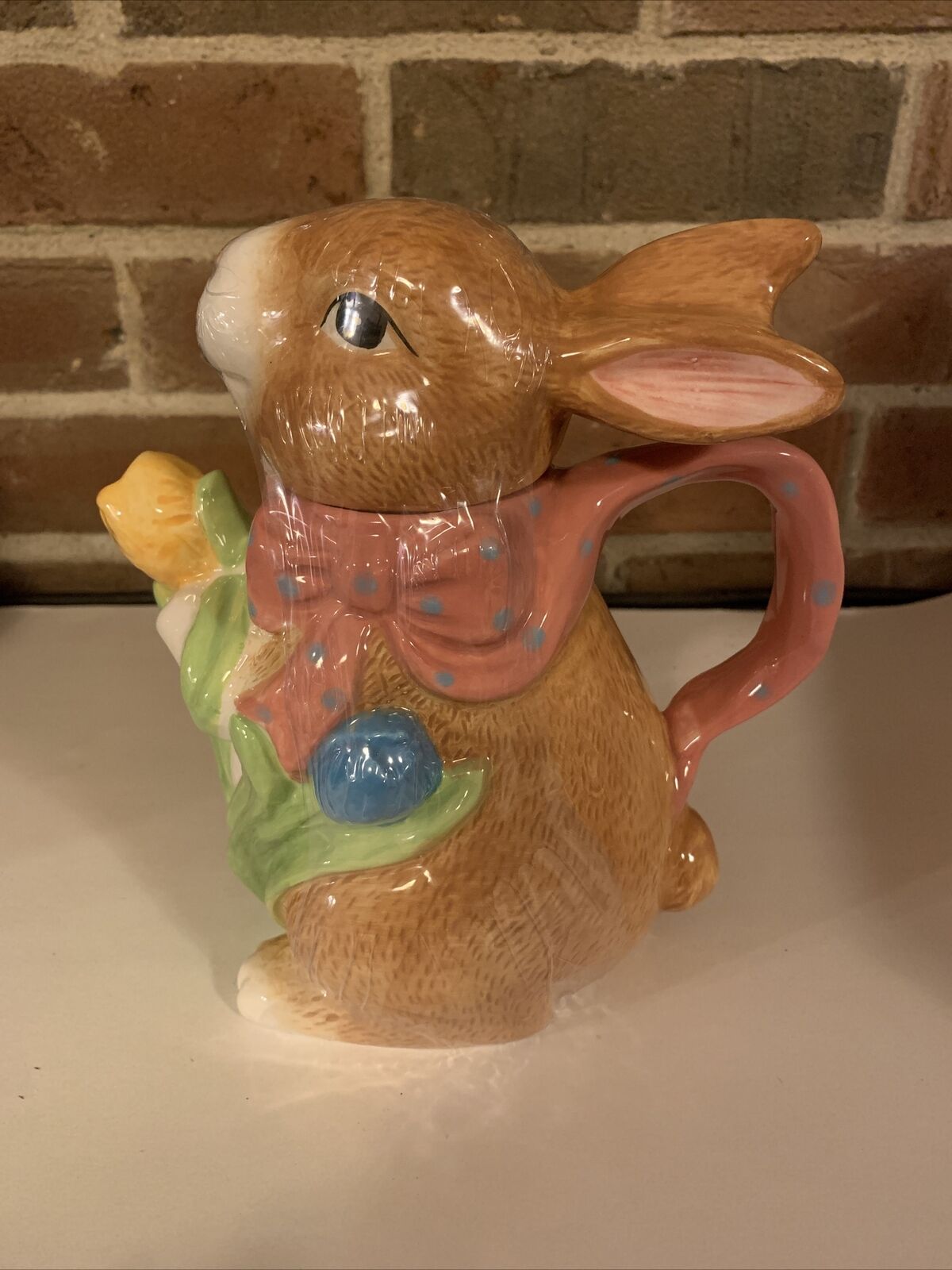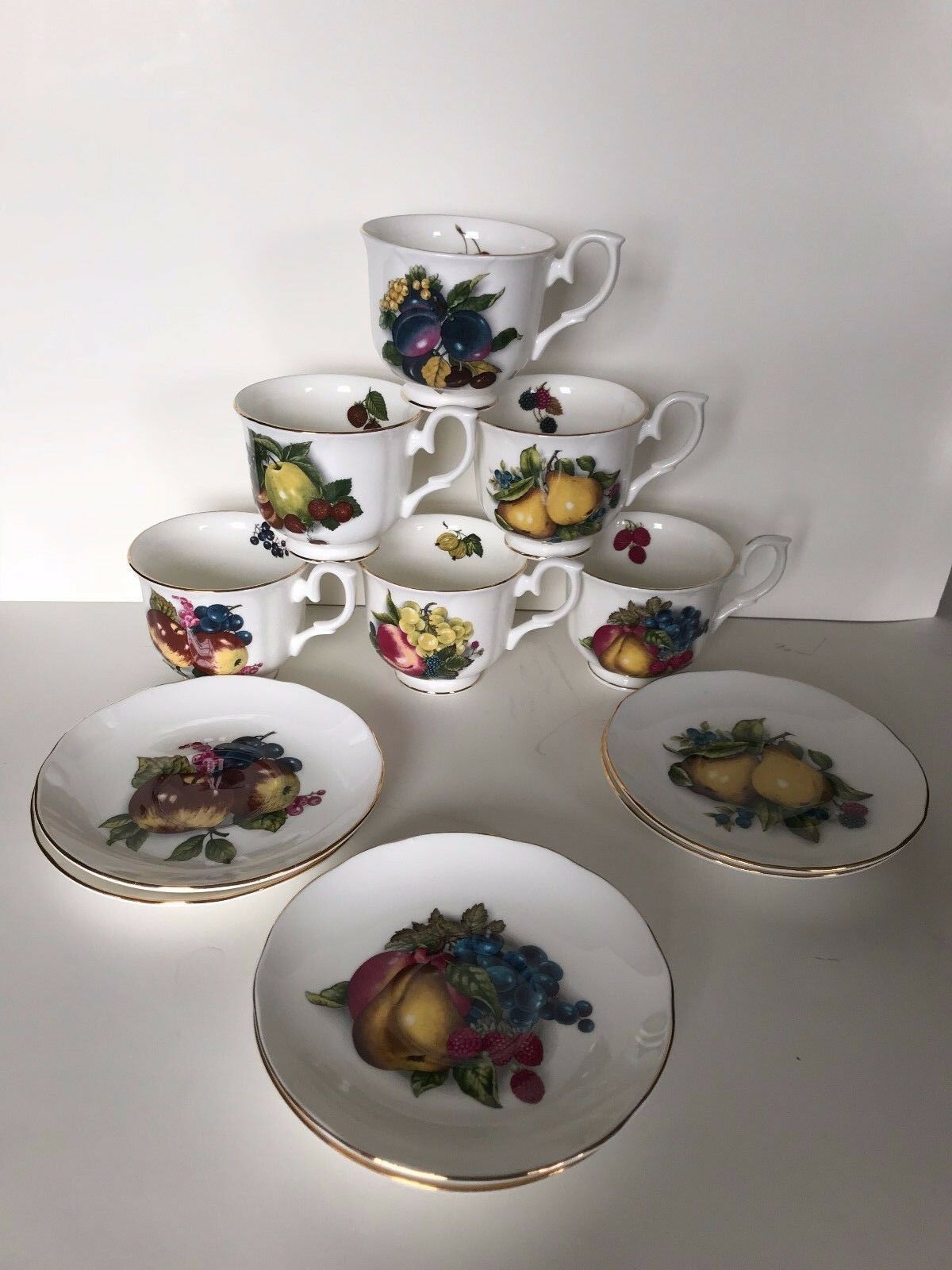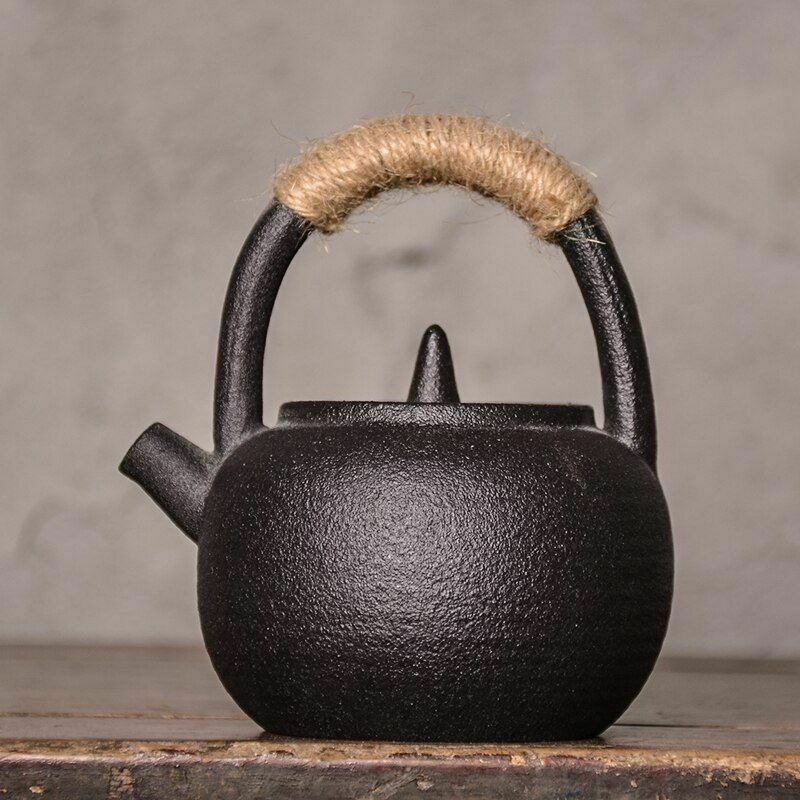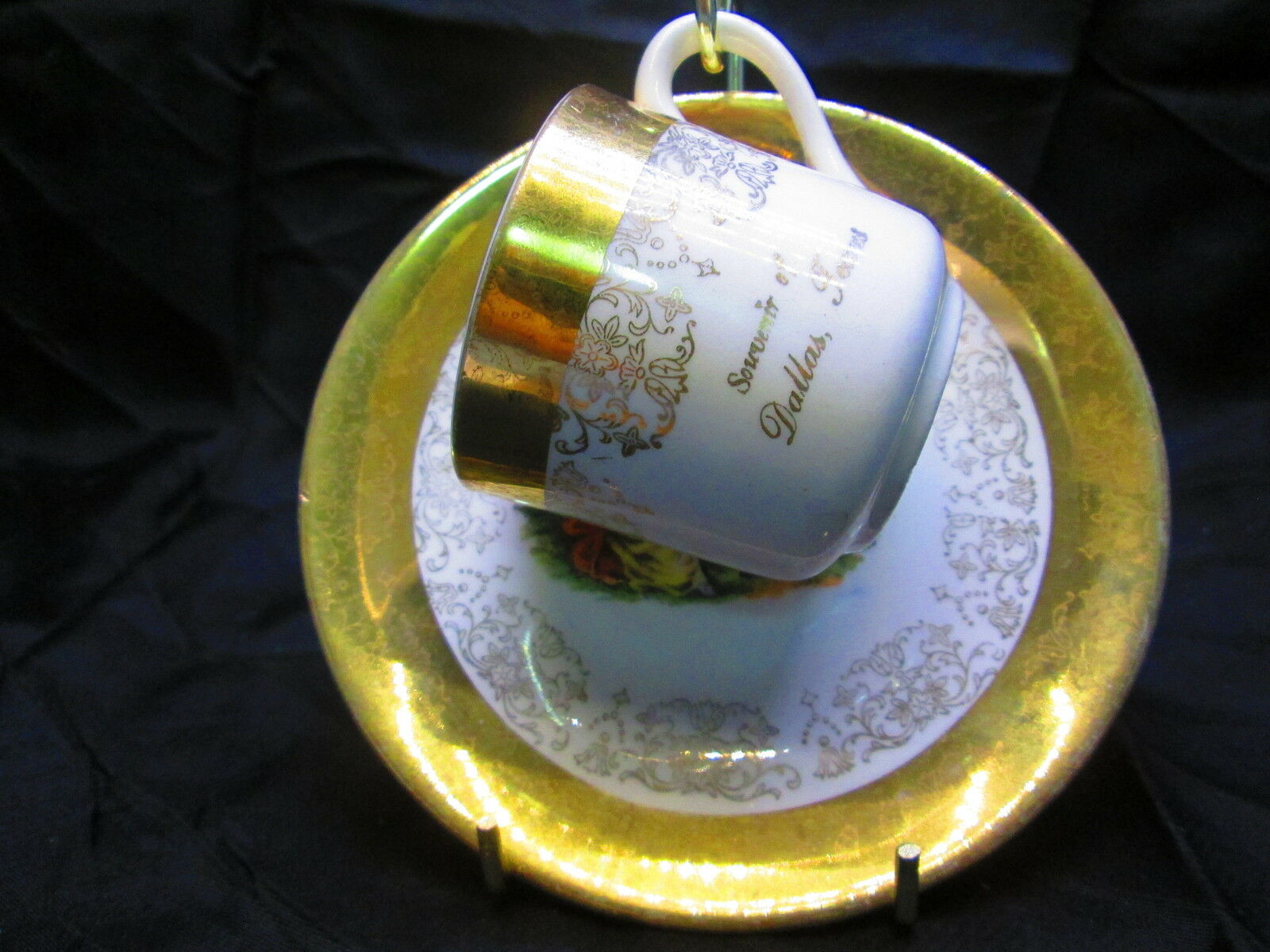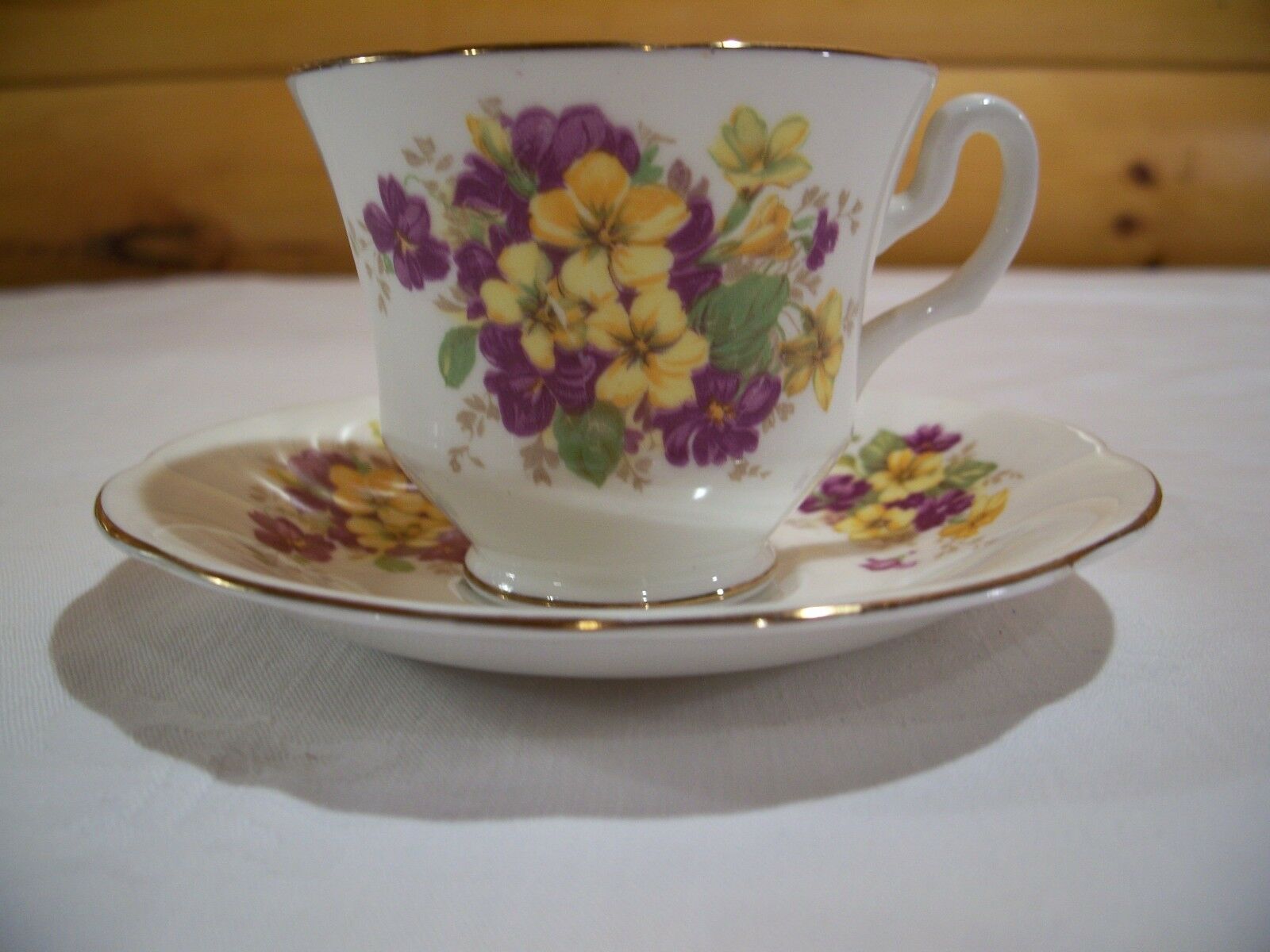-40%
Fine Porcelain 15 OZ Tea Pot with Stainless Steel Infuser Red Peony on Blue
$ 15.3
- Description
- Size Guide
Description
Peony, the largest kind, in Chinese, is called mudan. Mudan is the national flower of China, the artists and painters' favorite. It is the queen of all the flowers, stands for wealth and nobility.The peonies on the tea pot are relief, highlighted by gold lines. The Chinese characters about peony's beauty and nobility are gold, so is the knob of the cover.
The tea pot is not microwave safe due to the gold decoration.The gold will last forever if take good care of it. It is dishwasher safe. But it's better wash exquisite tea pot like this on the top rail of dishwasher or wash by hand. The quality of the tea pot complies with FDA standard, safe for foods.
Approximate capacity: 420 ml (15 OZ)
There is no stamp on the base of the tea pot.
Gift box packing.
The Bodhisattva characteristics of china:
Endurance.
To turn into fine china, the ceramic materials have to go through most of the following processing steps that differ depending on the shape,required properties, and decoration of the final product: grinding, stirring, rolling, throwing, pressing, extruding, casting, drying, carving, painting, biscuit firing, cooling, glaze firing, decal firing, gold firing,etc. Normally the glaze firing temperature for fine china is as high as 1310~1400℃ (2390~2552ºF). The decal-firing temperature is usually above 800℃(1472ºF). Fine china is born from its relentlessly endurance. The sintering temperature of some ceramic products which are used for aerospace industry can be as high as 1800℃(3272ºF).
Non-attachment
. High temperature firing causes very high densification and wholly impermeable. After high temperature firing, the ordinary clay turned into fine china which is comparable to jade. It can be a plate, a tea pot, a bowl, a vase or a cup.... When a cup is used to drink coffee, tea, milk, juice or wine, it will not absorb any of them. Coffee can not make it black, milk can not make it white, juice can not make it sour or sweet, wine can not make it intoxicant or infatuated, it's in perfect stillness without attachment like a Bodhisattva.
Permanence.
Some ancient chinaware, they were buried in deep ocean or dark underground for hundreds or thousands of years,they are not corroded or tarnish. They are corrosion and tarnish proof as pure gold and gem diamond. Once a piece of china is made, it stays there, never convert to other substance. Just like a Bodhisattva who has attained the nirvana of no dwelling, no return to the six divisions in the wheel of karma.
Giving.
Fine china is made of clay, feldspar,limestone,quartz, plant ash, water, etc., all these materials are given by the generous nature.The ingredients are always there,only waited for the human wisdom to discover the recipe to turn them into fine china. Being a gift from the nature, as well as a product of human wisdom, being the first global commodity, china has benefited myriad people, whether they are old or young, women or men, poor or rich,Easterners or Westerners. Contemporary people may not feel the benefit of chinaware as much as the people lived a few centuries ago. As per the Pilgrim Art - the Culture of Porcelain in World History by Mr.Robert Finlay,
in the 16th century, most people(in Europe)still used trenchers of wood and bread, as well as drinking cup made from horn and ash wood. In England, unglazed earthenware mugs replaced"black jacks",tankards made from leather coated with pitch, only in the late 16th century.
Nowadays chinaware are very common, affordable by almost every family, thus do not make us feel benefited. This coincides with what's taught in the Vajra Sutra:
a Bodhisattva should not dwell anywhere when he gives.
